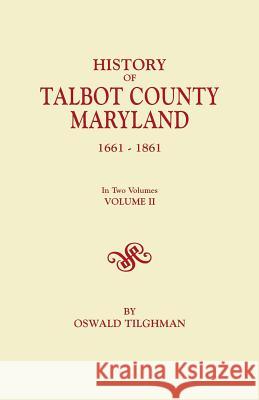History of Talbot County, Maryland, 1661-1861. In Two Volumes. Volume II » książka
History of Talbot County, Maryland, 1661-1861. In Two Volumes. Volume II
ISBN-13: 9780806347233 / Angielski / Miękka / 2013 / 574 str.
This historic book may have numerous typos and missing text. Purchasers can usually download a free scanned copy of the original book (without typos) from the publisher. Not indexed. Not illustrated. 1915 edition. Excerpt: ...portion of Talbot County than now belongs to it. There were then within its bounds, besides the Parish Church--called "Chester Church"--three Chapels of ease, viz.: the "Up-River Chapel" (upon the site of the present St. Luke's, Church Hill)--"Tuckahoe Chapel" (in what is now St. John's Parish, in the counties of Caroline and Queen Anne) and "St. Luke's, Wye." From the fact that the Parish Church very shortly afterwards needed repair, and the Chapel at Wye renewal, these structures, even at that early date, must have been standing for a number of years. The probability is that the first Chester Church and the first St. Luke's at Wye, were the very earliest churches erected on the mainland of the Eastern Shore. We all know that Kent Island was the cradle of the Church of Maryland, the first settlement within its borders having been made there, and having been made by members of the Church of England. As early as 1618 Capt. William Claiborne, Secretary of State to the Virginia Colony, who is referred to in his appointment to that office as "a man of quality and trust,"--came from Jamestown to Kent Island with a company of one hundred colonists. There were with this colony a clergyman of the Church of England, the Rev. Richard James, by whom, in all human probability, the foundation of the first Church in Maryland was laid, and whose death occurred in 1638. From the Island the colony spread, carrying of course, the Church with it, to the neighboring territory, and Chester and Wye Churches being nearest to the Island, were the first erected. From these data, we may safely infer that these churches were built about the year 1640--certainly not later than 1650. The records begin with the rectorship of the Rev. John Lillingston in 1694--whether...











